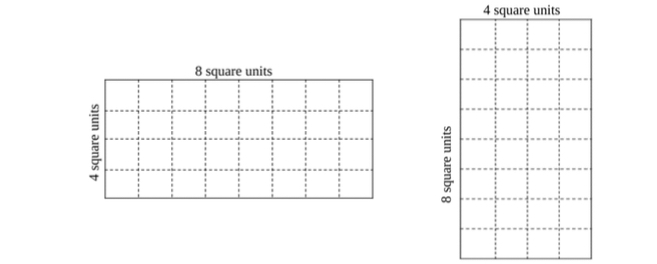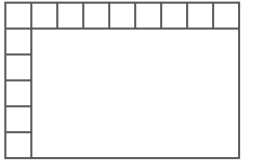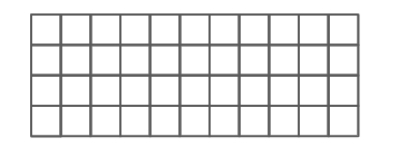General Information
Benchmark Instructional Guide
Connecting Benchmarks/Horizontal Alignment
Terms from the K-12 Glossary
- Rectangular Array
Vertical Alignment
Previous Benchmarks
Next Benchmarks
Purpose and Instructional Strategies
The purpose of this benchmark is for students to calculate the area of rectangles presented visually as arrays or by using a multiplication formula (MTR.5.1).- The benchmark MA.3.GR.2.1 expects students to calculate the area of rectangles by counting unit squares that covered them with no gaps or overlaps. As students count, they will likely connect their calculations to rectangular arrays and connect understanding that multiplication is a more efficient strategy for calculating than counting or adding unit squares.
- Instruction should encourage students to discover a multiplication formula based on patterns they have observed through practice and classroom discussions. This will make a multiplication formula more meaningful for students conceptually (MTR.5.1). Teachers can help students formalize the formula into an equation, like = × . In this benchmark, memorization of a multiplication formula is the goal (MTR.3.1).
Common Misconceptions or Errors
- When using a formula, students may be confused about which dimension to label the length and width in a rectangle. During instruction, teachers should make connections to the commutative property of multiplication to emphasize that the order in which dimensions are multiplied will not change the rectangle’s area, and therefore the length and width can be labeled flexibly.
Strategies to Support Tiered Instruction
- Instruction includes the teacher modeling how to draw in rows and columns to cover a figure based on the side lengths given. Students then count the total number of square units that make up the figure and write a multiplication equation to represent it. Teachers help students make the connection to the Commutative Property of Multiplication by having them create and compare figures with the same factors for their rows and columns, just switched. Emphasize that the order in which dimensions are multiplied will not change the rectangle’s area, and therefore the length and width can be labeled flexibly.
- For example, when provided with a figure with the dimensions of 4 × 8, students draw in the rows and columns as shown by the dotted lines. The teacher then asks students to do the same for an image with the dimensions 8 × 4 and has them compare the area of the two figures.

- Teacher provides dimensions for a given rectangle and students use square tiles to build the figure in two ways. Students then count the number of tiles in each row and in each column and creates a multiplication expression. Next, the students count the total number of tiles used to make the figure and recognize that as the area of the figure.
- For example, the teacher asks students to create a rectangle with a length of 5 and a width of 7. Students use the square tiles to create two rectangles applying the Commutative Property of Multiplication and writing multiplication equations to match. Then, students count the total number of tiles to check that the area they found for their equation is correct.
Instructional Tasks
Instructional Task 1
Kendra used unit squares with 1-centimeter side lengths to find the area of the rectangle below. She started, but then stopped for a lunch break.
- Part A. Write two equations that can be used to find the area of Kendra’s rectangle.
- Part B. What is the area of Kendra’s rectangle?
- Part C. Which has greater area, the rectangle above or a square with side lengths of 8 centimeters? Explain.
Instructional Items
Instructional Item 1
The rectangle below is composed of unit squares. Which equations can be used to find the area of the rectangle?
- a. = 4 × 10
- b. = 10 × 4
- c. = 4 + 11
- d. = 4 × 11
- e. = 11 + 11 + 11 + 11
- f. = 11 × 4
Instructional Item 2
What is the area of the rectangle below?
